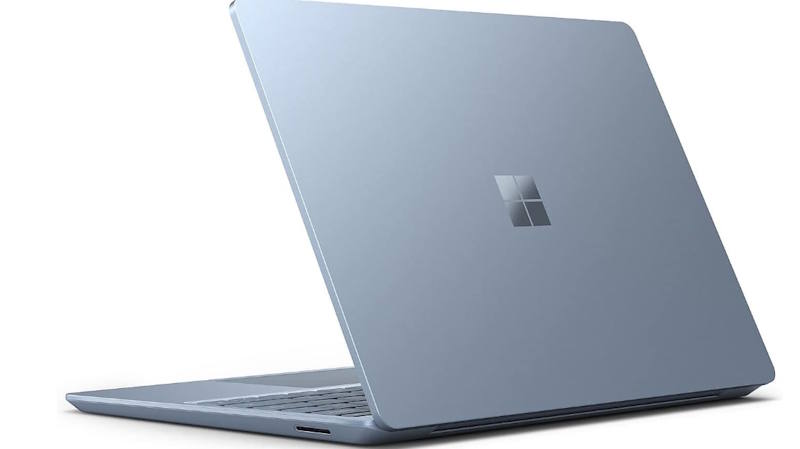In October 2020, Microsoft introduced the Surface Laptop Go, a more affordable and compact addition to its Surface Laptop series. Positioned as an entry-level model, the Laptop Go aimed to bring premium design and essential features at a lower price point. This release was part of Microsoft’s broader strategy to make Surface devices more accessible to students, casual users, and professionals who needed a lightweight, budget-friendly laptop.
Where the Surface Laptop Go Stands in Microsoft’s Hardware Ecosystem
The first-generation Surface Laptop Go marked a shift in Microsoft’s approach, offering a device that retained the elegance of the Surface Laptop lineup but with more modest specifications. While the standard Surface Laptop series catered to professionals and power users, the Laptop Go was designed for portability, affordability, and simplicity. It competed with budget-friendly Chromebooks and lower-end Windows laptops, making Surface devices more competitive in the mid-range laptop market.

Specifications of the First-Generation Surface Laptop Go
The Surface Laptop Go (2020) came with the following hardware specifications:
- Display: 12.4-inch PixelSense touchscreen (1536 x 1024 resolution, 3:2 aspect ratio)
- Processor: Intel Core i5-1035G1 (10th Gen)
- RAM: 4GB or 8GB LPDDR4x
- Storage: 64GB eMMC (base model) or 128GB/256GB SSD (higher configurations)
- Graphics: Intel UHD Graphics
- Ports: 1x USB-C, 1x USB-A, 3.5mm headphone jack, Surface Connect port
- Battery Life: Up to 13 hours (varies with usage)
- Operating System: Windows 10 Home (S Mode, upgradeable to full Windows 10)
- Security: Fingerprint power button (on select models)
- Weight: 1.11 kg (2.45 lbs)
Usage and Target Audience
The Surface Laptop Go was designed for students, remote workers, and general users who needed a stylish and portable device for everyday tasks. It excelled in web browsing, office work, video conferencing, and light creative tasks but was not intended for heavy multitasking, gaming, or resource-intensive applications.
What Users Liked About the Surface Laptop Go
- Premium Build Quality: Despite its lower price, the Laptop Go maintained Microsoft’s signature premium design, with an aluminum top and a polycarbonate base.
- Lightweight and Portable: At just 1.11 kg, it was one of the lightest Surface devices, making it ideal for users on the go.
- Good Keyboard and Trackpad: Users praised the comfortable keyboard and precise trackpad, which were among the best in its price range.
- Touchscreen: The inclusion of a touchscreen set it apart from many budget laptops that lacked this feature.
Areas Where the Surface Laptop Go Fell Short
- Low-Resolution Display: While the 3:2 aspect ratio was appreciated, the resolution (1536 x 1024) was lower than expected, making text and visuals less sharp.
- Limited Base Model Configuration: The entry-level model with 4GB RAM and 64GB eMMC storage was underwhelming, making the mid-tier configurations a more practical choice.
- No Backlit Keyboard: A surprising omission for a laptop in this category, making typing in low-light conditions challenging.
- Lack of USB-C Charging: While it had a USB-C port, it did not support charging, limiting its versatility.
Reception and Market Impact
Upon release, the Surface Laptop Go received mixed but generally positive reviews. Critics and users appreciated its portability, design, and performance for everyday tasks but noted that the base model was underpowered. Many recommended upgrading to a model with 8GB RAM and SSD storage for a smoother experience.
Despite its limitations, the Laptop Go found a place among students and casual users looking for a Surface device at a lower price point. Microsoft positioned it as a Chromebook competitor, though the lack of a backlit keyboard and its relatively high price compared to some Chromebooks limited its appeal in education markets.
The Successor: What the Surface Laptop Go 2 Brought New
In 2022, Microsoft released the Surface Laptop Go 2, refining the original model with minor but meaningful upgrades:
- Newer Processor: It featured an Intel Core i5-1135G7 (11th Gen), offering better performance and power efficiency.
- Improved Base Storage: The 64GB eMMC option was removed, with the base model starting at 128GB SSD, addressing a major complaint from the first generation.
- Better Cooling and Efficiency: Improved thermal management for quieter operation.
- Upgraded Webcam and Mic: Slightly better video call quality, though still 720p.
- Same Design: The Laptop Go 2 retained the same premium design, lightweight build, and 12.4-inch touchscreen.
Conclusion
The first-generation Surface Laptop Go (2020) was an ambitious attempt by Microsoft to offer a more affordable and portable Surface experience. While it had compromises, it was a well-received addition to the Surface lineup. Its successor, the Surface Laptop Go 2, improved upon some of its shortcomings, making it a more compelling choice in the budget-friendly laptop market.
For users who valued portability, premium design, and touchscreen functionality at a reasonable price, the Surface Laptop Go was a solid option, provided they opted for the higher-end configurations.